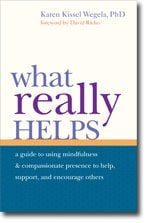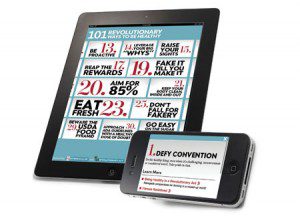Today I’m reading What Really Helps by Karen Kissel Wegela, Ph.D. It’s an approachable, well-written text on how to help others. Simple enough you might think. However, not so simple. She highlights our tendency to want either want to fix things when someone presents a painful or problematic situations or to avoid it altogether. Harder is to sit with open presence to the pain and difficulty of another.
This other to help may be a client or patient, friend, or family member. Hell, it might even be ourself to ourself. She asks:
What is helpful? When someone is in pain, what can we do that is actually beneficial? How can we prepare ourselves to offer genuine help and, at the same time, to be able to be with others how are in pain?
Mindfulness is, of course, part of the answer.
A mindfulness-based approach to helping teaches that in order to be capable of benefiting others, we need first of all to deal with our own confusion –our own lack of confidence, our lack of clarity, and our fear of pain.
She goes on to share practices and insights from the Tibetan Buddhist tradition such as maitri and tonglen– the practice of sending and taking. She also details the qualities of “brilliant sanity” that include openness, clarity, and compassion.
I like the characterization of maitri as “friendliness without limit.” I’m less familiar with the practice of tonglen than the lovingkindness practices of vipassana, so I enjoyed her treatment of the practice:
Tonglen is a practice that ripens our hears. All the juicy, smelly , negative throughs ad feeling wee have are the rich compose that lets our hearts mature.
Tonglen is counterintuitive. It asks us to work with the things we might be prone to get rid of. It helps us to overcome aversion. We breathe in the difficulty and breathe out the relief. “We just breathe in and feel the pain of the situation and breathe out relief and sanity.” The pain can be our own or that of another.
Help is a rhythmical process. “As in all cycles, there is no real ending to the cycle of helping. Sitting sown with ourselves if followed again by contemplating wear we are trying to do. Even as we become comfortable with the fruits of our contemplation, it is time to venture out again.”
The average person as well as the healing professional will feel at home in the Wegela’s readerly tone.


